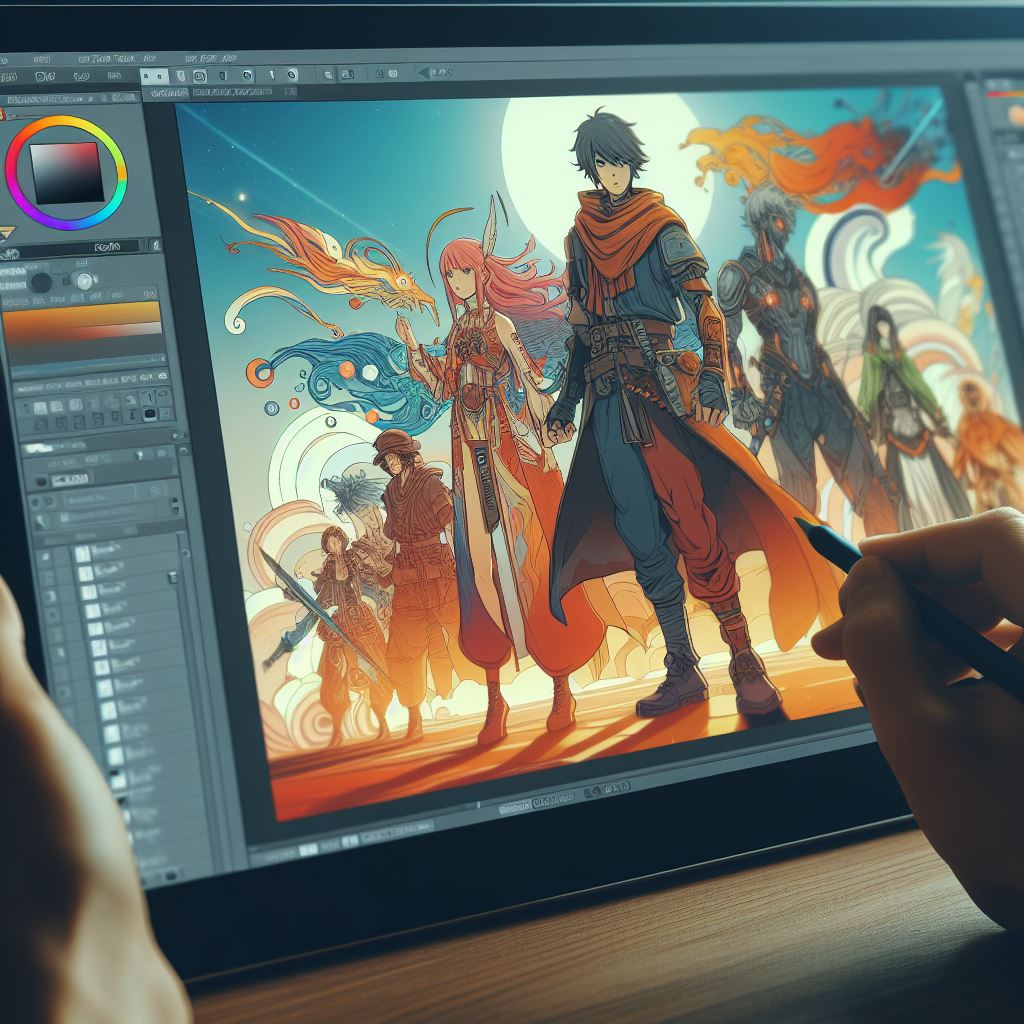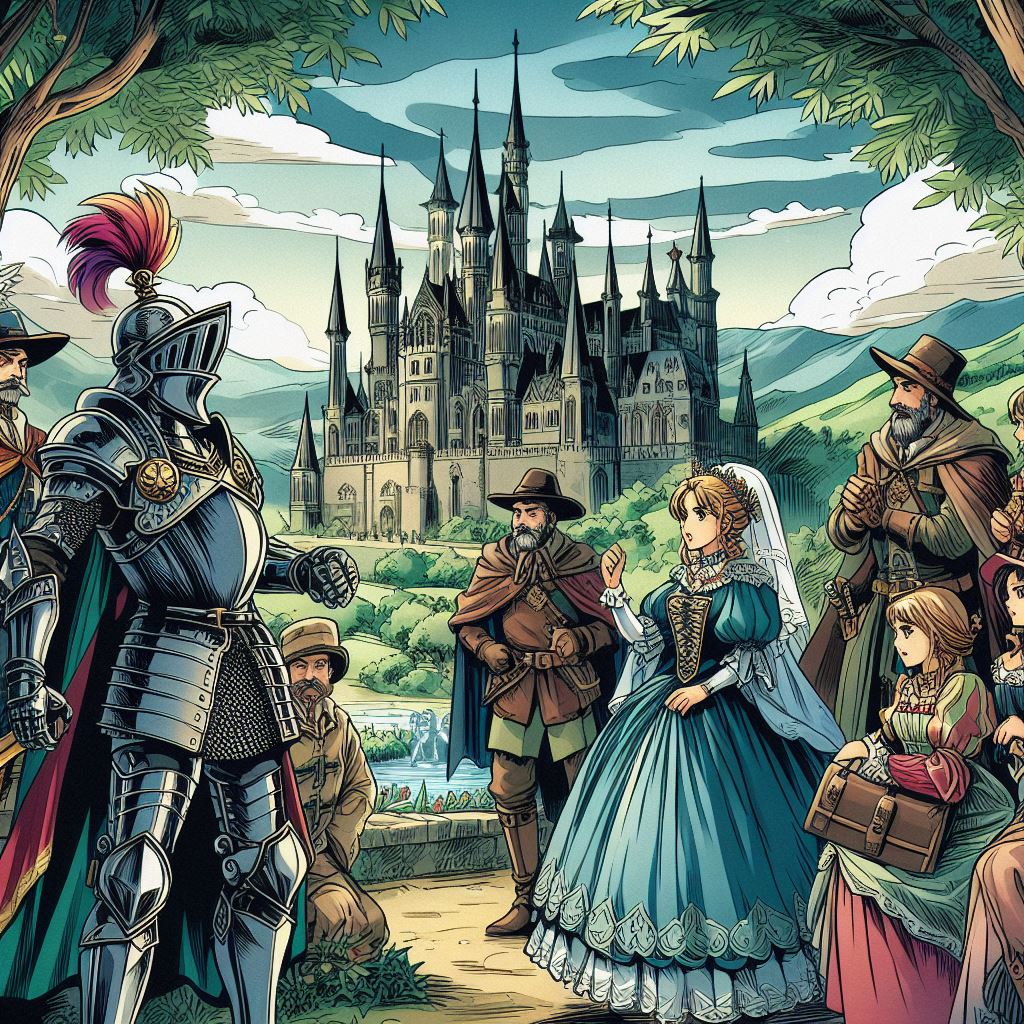How to Create 2D Explainer Video Characters

Table of Contents
Key Takeaways:
| Keypoint | Description |
|---|---|
| Introduction | – Importance of Characters in 2D Explainer Videos – Overview of the Creative Process |
| Understanding the Audience | – Identifying Target Demographics – Tailoring Characters to Audience Preferences |
| Conceptualizing the Character | – Defining Character Roles – Personality Traits and Backstories – Visual Attributes |
| Design Principles for 2D Characters | – Simplification vs. Detail – Color Theory and Its Impact – Expressiveness and Emotion |
| Tools and Software for Character Creation | – Vector vs. Raster Graphics – Popular Software Choices – Pros and Cons of Each Tool |
| The Art of Storytelling Through Characters | – Integrating Characters with the Narrative – Ensuring Character Consistency |
| Character Animation Techniques | – Frame-by-Frame vs. Rigging – Creating Fluid Movements – Adding Life to Characters |
| Voice Acting and Sound Effects | – Matching Voices to Characters – The Role of Sound Effects in Characterization |
| Incorporating Characters into Explainer Videos | – Scriptwriting with Characters in Mind – Scene Planning and Character Placement |
| Feedback and Iteration Process | – Gathering Audience Insights – Refining Characters Based on Feedback |
| Legal Considerations | – Copyrights and Trademarks – Creating Original Characters |
| Marketing with Characters | – Building Brand Identity – Engaging Audiences Through Relatable Characters |
| Case Studies: Successful Character-Driven Videos | – Analysis of Popular 2D Explainer Videos – Lessons Learned |
| Future Trends in Character Design | – AI and Machine Learning in Character Creation – Emerging Styles and Techniques |
| Tips for Aspiring Character Designers | – Best Practices – Common Pitfalls to Avoid |
| Conclusion | – Summarizing the Role of Characters in Enhancing 2D Explainer Videos |
Discover essential tips for creating engaging and memorable characters for 2D explainer videos, enhancing your storytelling and audience connection.
Explainer videos have become a staple in digital marketing, offering a straightforward way to present complex ideas. The heart of these videos often lies in their characters, which can make or break the viewer’s engagement. In this article, we delve into the art of creating compelling characters for 2D explainer videos, combining expertise, experience, and a sprinkle of creativity.
Creating Characters for 2D Explainer Videos

The creation of characters for 2D explainer videos is not just about drawing; it’s about storytelling. These characters serve as the bridge between your message and the audience, making the abstract tangible and the mundane fascinating.
Understanding the Audience
The first step is to know whom you’re talking to. Characters that resonate with your audience’s experiences, challenges, and desires can significantly enhance the effectiveness of your video. Tailoring characters to reflect your audience’s demographics, such as age, profession, and cultural background, ensures relevance and relatability.
Conceptualizing the Character
Begin with defining the character’s role in your story. Are they the hero, the mentor, or perhaps the comic relief? Each role necessitates different traits and backstories. The visual attributes, including attire, color scheme, and accessories, should align with the character’s personality and the video’s tone.
Design Principles for 2D Characters
The principles of design play a crucial role in character creation. A balance between simplification and detail ensures characters are expressive yet not overwhelming. Color theory aids in conveying emotions and traits, while the right level of expressiveness breathes life into the characters.
Tools and Software for Character Creation

Choosing the appropriate tools and software is a critical step in the character creation process for 2D explainer videos. These tools not only influence the efficiency of the workflow but also significantly impact the quality and versatility of the final animation.
While proprietary software like Adobe Illustrator and Photoshop are industry standards known for their robust features and reliability, they might not be accessible to everyone due to their cost. Fortunately, the open-source community offers powerful alternatives that can meet the needs of animators and designers, from beginners to professionals.
Vector Graphics Software
Inkscape: An open-source vector graphics editor, Inkscape offers capabilities similar to Illustrator but at no cost. It is excellent for designing characters, providing tools for drawing, shaping, and texturing in a scalable format. Inkscape’s support for SVG (Scalable Vector Graphics) format ensures that your work is versatile and can be easily integrated into various stages of video production.
Vectr: Another free, cloud-based vector graphics software, Vectr is user-friendly and accessible, making it ideal for beginners or those working across multiple devices. While it might not offer the depth of features that Inkscape does, its simplicity is perfect for quick character sketches and basic designs.
Raster Graphics Software
GIMP (GNU Image Manipulation Program): GIMP is a powerful and flexible open-source alternative to Photoshop. It offers advanced features for raster graphics editing, including detailed texturing, color correction, and layer management. GIMP is suitable for adding intricate details and textures to characters, making them more lively and realistic.
Krita: Designed with artists in mind, Krita is a free, open-source painting program that excels in creating and editing digital paintings and illustrations, including character designs. It offers an intuitive interface, numerous brush engines, and stabilizers for smooth drawing, making it a favorite among illustrators and comic book artists.
Animation Software
Synfig Studio: Synfig Studio is an open-source 2D animation software designed to produce film-quality animation with fewer resources. It supports vector and bitmap artwork, allowing for the seamless transformation of your character designs into animated sequences.
Blender: While primarily known for its 3D modeling and animation capabilities, Blender also includes a comprehensive set of tools for 2D animation and character creation. Its Grease Pencil feature allows artists to draw directly in 3D space, providing a unique bridge between 2D drawing and 3D animation.
Takeaway:
The choice of tool depends on your specific needs, such as the level of detail required in your characters, your familiarity with graphic design software, and whether you’re working individually or as part of a team.
Open-source software offers a cost-effective way to explore and develop your skills in character creation, providing a vast community and a wealth of resources to support your journey in animation.
Whether you choose vector or raster graphics software, the key is to select a tool that aligns with your creative process and helps bring your characters to life in the most efficient and expressive way possible.
The Art of Storytelling Through Characters

Characters are storytelling vessels. Their design and actions should consistently reflect the narrative’s core themes. Ensuring character consistency across scenes reinforces the story’s coherence and viewers’ engagement.
Character Animation Techniques
Animation brings characters to life. Techniques like rigging allow for more fluid, natural movements, making characters more relatable and engaging. Frame-by-frame animation offers unique expressiveness, ideal for conveying subtle emotions or complex actions.
Voice Acting and Sound Effects
Voice acting adds depth to characters, while sound effects enrich the ambiance. Selecting the right voice and sound profile can elevate the character’s impact, making them memorable to the audience.
Incorporating Characters into Explainer Videos
Incorporating characters into explainer videos is a delicate balance that necessitates careful planning and execution. Characters should not only serve the narrative but also contribute to the clarity and engagement of the message being conveyed.
The following expanded guidelines delve deeper into the integration of characters through scriptwriting, scene planning, and their interactions:
Scriptwriting with Characters in Mind
- Character Development: Begin by developing characters that resonate with your target audience. This means creating backstories, personalities, and motives that align with the narrative you wish to convey. Characters should embody relatable traits or face challenges that mirror the viewer’s experiences or aspirations.
- Narrative Role: Assign roles to your characters that complement the story arc. Whether they are protagonists, antagonists, or supporting characters, their presence should serve a purpose and drive the narrative forward. This strategic placement ensures that characters are seamlessly woven into the script, enriching the story rather than detracting from it.
Scene Planning and Character Dynamics
- Visual Storytelling: When planning scenes, consider how the visual elements will interact with the narrative. This includes deciding on the setting, character placement, and the use of props. Each scene should visually represent a part of the story, using characters to highlight key messages or shifts in the narrative.
- Character Movement: Think about how characters will move within the scene. Their movements should reflect their personalities and emotional states, contributing to the story’s emotional depth. Movement can also be used to direct the viewer’s attention to specific elements or transitions within the video.
Guiding Viewer’s Attention with Character Placement
- Focal Points: Use characters as focal points to guide the viewer’s attention. This can be achieved through character positioning, gestures, or directing their gaze towards important elements or information. The goal is to ensure that viewers are looking where you want them to, when you want them to.
- Interaction with Elements: Have characters interact with key elements within the scene, such as touching, looking at, or using a product. This not only draws attention to these elements but also helps to demonstrate their relevance or functionality in a natural, engaging way.
Character Interaction and Engagement
- Dialogue and Interaction: Characters should interact with each other in ways that enhance the narrative and engage the viewer. This includes dialogue, non-verbal cues, and reactions to events within the video. These interactions should feel authentic and contribute to the overall flow of the video.
- Emotional Connection: Create moments that allow for an emotional connection between the characters and the audience. This can be achieved through shared experiences, challenges overcome, or the portrayal of common desires and fears. An emotional connection makes the message more memorable and impactful.
In summary, the incorporation of characters into explainer videos requires thoughtful consideration of how they fit into the narrative, their role within the story, and how they interact with each other and the environment.
By carefully planning and executing character integration, you can create explainer videos that not only inform but also engage and resonate with the audience on a deeper level.
Feedback and Iteration Process
Audience feedback is invaluable. It offers insights into how your characters are perceived and what might be improved. Iterating based on feedback ensures your characters remain relevant and engaging over time.
Legal Considerations
Creating original characters is crucial to avoid legal pitfalls. Copyrights and trademarks can complicate character usage, so ensuring originality and securing the necessary rights are essential steps.
Marketing with Characters

Marketing with characters offers a unique opportunity to humanize your brand and create a deeper connection with your audience.
When characters from explainer videos are integrated into broader marketing efforts, they do more than just tell a story; they embody the values, personality, and essence of your brand.
This expanded section explores how effectively leveraging characters can enhance marketing strategies and foster brand loyalty.
Building a Relatable Brand Identity
- Emotional Engagement: Characters with distinct personalities and stories can evoke emotions, making your brand more memorable. By consistently featuring these characters in various marketing campaigns, you create a narrative thread that consumers can follow and engage with, leading to increased brand loyalty.
- Brand Mascots: Consider elevating a character to become your brand mascot. This character can represent your brand across all platforms, from social media to print advertising, providing a familiar face that consumers grow to know and trust. Mascots like Tony the Tiger or the Michelin Man show the long-term value of such characters in creating iconic brand identities.
Consistency Across Marketing Materials
- Multi-Platform Presence: Utilize your characters in a variety of marketing materials, including email campaigns, social media posts, packaging, and point-of-sale displays. This not only reinforces brand recognition but also ensures a cohesive brand experience for consumers across different touchpoints.
- Storytelling Extensions: Expand the narratives of your characters beyond explainer videos into blog posts, social media stories, and interactive web content. These storytelling extensions offer fresh content that keeps your audience engaged and invested in the characters’ journeys and, by extension, your brand.
Enhancing Consumer Engagement
- Interactive Experiences: Create interactive marketing campaigns that allow consumers to engage with characters in meaningful ways, such as through augmented reality experiences, online games, or personalized video messages. Such interactions deepen the consumer’s connection to the brand and make marketing messages more engaging.
- Community Building: Use characters to foster a sense of community around your brand. Encourage user-generated content where customers share their own stories or creations related to your characters. This not only amplifies engagement but also builds a collective brand experience shared among your audience.
Leveraging Characters for Specific Campaigns
- Seasonal Promotions: Tailor the adventures or scenarios of your characters to align with seasonal themes or promotional events. This keeps your marketing content timely and relevant, while also demonstrating the versatility of your brand through its characters.
- Product Launches: Introduce new products or services through your characters, allowing them to showcase the benefits or unique selling points. This approach can make product launches more relatable and understandable, especially if the character has already earned the audience’s trust and affection
Future Trends in Character Design
Emerging technologies like AI and machine learning are set to revolutionize character creation, offering new possibilities in personalization and animation. Staying abreast of these trends can provide a competitive edge.
Tips for Aspiring Character Designers
Aspiring character designers should focus on mastering fundamentals, embracing experimentation, and actively seeking feedback. Diving deep into anatomy, expression, and storytelling enhances your foundation, while experimenting with styles and techniques broadens your creative range. Constructive feedback, whether from peers or mentors, is invaluable for growth. Stay curious and adaptable to navigate the evolving landscape of character design effectively.
Conclusion
Characters are the soul of 2D explainer videos. They make the intangible tangible, the complex understandable, and the mundane fascinating. By following these tips on how to make 2D explainer video characters and embracing creativity, you can create characters that not only enhance your message but also forge a lasting connection with your audience
FAQs: How to Create 2d Explainer Video Characters
How do I choose the right voice for my character?
Choosing the right voice involves considering the character’s personality, background, and role within the story. It’s essential to audition multiple voice actors to find a voice that truly embodies the character’s essence. Also, consider the emotional range required for the character throughout the video.
What software is best for beginner character designers?
For beginners, software that is user-friendly and offers robust tutorials is key. Adobe Illustrator and Photoshop are popular choices due to their extensive resources and supportive communities. However, free software like Inkscape or GIMP can also be great starting points for those new to character design.
What are the legal considerations when creating characters?
When creating characters, it’s crucial to ensure they are original and do not infringe upon existing copyrights or trademarks. If you’re inspired by existing characters, ensure your creations are significantly different to avoid legal complications. Consulting with a legal expert can provide guidance specific to your situation.
Can characters really impact the effectiveness of an explainer video?
Absolutely. Characters can significantly impact an explainer video’s effectiveness by making the content more relatable and engaging. They help to humanize complex topics, making them easier to understand and remember. Characters can also evoke emotions, leading to a stronger connection with the audience.
How often should I update or revise my characters?
Updating or revising characters depends on several factors, including feedback from your audience, changes in your brand, or the need to stay relevant with trends. Regularly review your characters to ensure they continue to resonate with viewers and accurately represent your message.
How do I ensure my characters fit the brand image?
Ensuring your characters align with your brand image involves a deep understanding of your brand’s values, tone, and audience expectations. Characters should embody the essence of your brand, reinforcing its message and identity. Consistency in character design and behavior across all brand touchpoints is key.
What is the best approach to creating a character backstory?
Creating a compelling character backstory involves considering the character’s role in the explainer video and how their history influences their actions and motivations. A good backstory adds depth to the character, making them more relatable and memorable. It should be relevant to the video’s message and help to enhance the overall narrative.
How to Create 2D Explainer Video Characters: An Article by Nicole Delgado 2024 | CMO | Explainer Video Company | Animated Explainer Videos For Business




